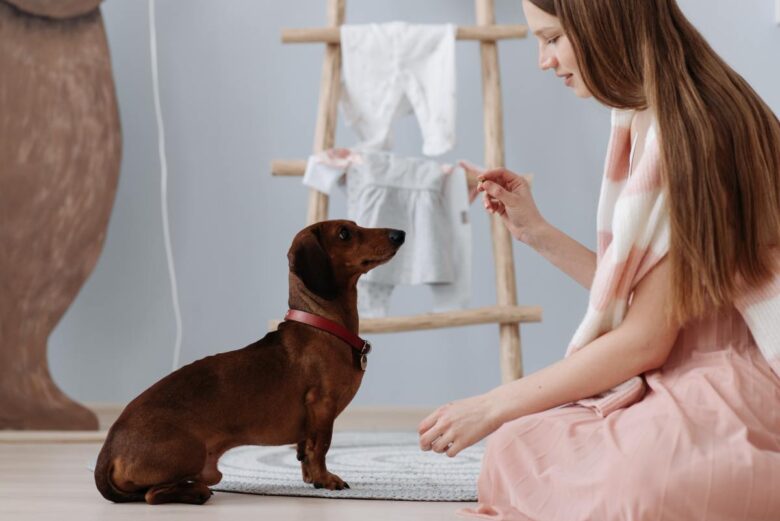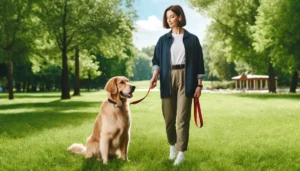Bringing a new dog into your home is exciting and rewarding. However, if you want to build a good relationship with your furry friend, it is important to set clear boundaries and teach good behavior through proper training. A professional dog trainer can help with this, but you can also train your dog at home in different ways. This article discusses six good dog training ideas that you can use to ensure your dog is well-behaved and a happy pet.
Table of Contents
Toggle1. Effective Reinforcement:
An important part of training a good dog is using positive reinforcement. Just like humans, dogs love to praise and reward good behavior. When your dog does something you want him to do, such as sitting when you say “sit” or walking well on a leash, immediately reward him with a treat, praise, or a combination of both. This will make your dog feel good about the behavior, making it more likely to happen again.
It is important to keep the timing and method of rewards consistent. To strengthen the link between action and reward, the reward should be given immediately after the desired behavior. High-quality treats attract your dog’s attention and encourage him to do what you say.
2. Basic Commands:
Teaching your dog basic commands is the first step in being able to talk to it and control it. Start with simple words like ‘lie’, ‘stay’, ‘come’ and ‘sit’. It is important to be consistent during training. Always use the same commands and hand movements and practice them in different places so you can remember them better.
To teach your dog the “sit” command, hold the treat above his head and gently push his butt down when you say “sit.” You should reward them as soon as they sit down. Gradually increase the amount of time you sit before giving the reward.
Remember that short-term training that takes place regularly is better than boring long-term training. Even if you have to go back and do something you already know how to do, end every meeting on a good note.
3. Leash Training:
As long as the dog is on a leash, daily walks can be fun for both the owner and the dog. Start training your dog to walk on a leash early and use positive reinforcement to reward calm behavior and off-leash walking. As you walk, stop and wait for your dog to come back to you if he pulls on the leash. If they do this, give them a compliment or a treat.
The key to leash training is consistency. If you don’t want to tighten the pull, wait for the strap to loosen before continuing. If your dog is always pulling, you may want to use a front clip harness, which will stop the pulling and give you more control.
Slowly add other things to the walk to teach your dog to focus on you. This will help in many different situations and ensure that your pet is well-behaved wherever you go.
4. Socialization:
Getting your dog used to different people, animals, places and situations is an ongoing process called socialization. This allows them to grow into happy and confident pets. Start socializing your dog early and continue to give him new things to do throughout his life.
Play with other dogs and take your dog to new places so he can experience different sounds, sights, and smells. If your dog has a good socialization experience, he will remain calm and confident. But be aware of how comfortable your dog is and don’t push him too hard. To avoid fear or anxiety, gradual exposure is critical.
5. Be Patient and Consistent:
Patience and consistency are important qualities that every dog owner must possess when training their dog. Dogs learn by doing things over and over and getting a reward each time. Giving your dog an occasional break from bad behavior will confuse him and slow down the learning process.
If something goes wrong, stay calm and be patient. Yelling at your dog or punishing him may cause him to lose trust in you, which may cause him to act out of fear. Instead, focus your dog’s attention on what you want him to do and reward him when he does it.
Consistency is important, not just during exercise. If you play with your dog every day, use the same cues, treats, and rules every time. This means people remember what they learned during the training and everyone knows what is expected of them.
6. Dealing with Bad Behavior:
It’s normal for dogs to do things you don’t want them to do, but you need to stop them immediately before they become a habit. You need to figure out why your dog is behaving badly and turn his attention to something better.
For example, if your dog likes to chew on furniture, give him good chew toys and praise him when he uses the toys. If your dog jumps on people, teach them to “jump away” and give them a treat while they have all four paws on the ground.
The key to successful correction is consistently addressing bad behavior. Also, make sure your dog gets enough mental and physical stimulation to prevent him from acting out of boredom.
Conclusion
By using these six effective dog training tips every day, you can strengthen your relationship with your dog and create a great living space for both of you. Remember that every dog is different and the best way to train a dog is to understand and meet its specific needs. If you are patient and consistent and always give them treats, you can have a well-behaved, happy furry friend by your side.
FAQs
1. How often should I train my dog? How long should each meeting last?
Short training sessions should be given regularly and should not last longer than 5 to 10 minutes. Perform training sessions several times a day, but be mindful of how much time and energy your dog has. Quality over quantity is very important when training a dog.
2. What should I do if my dog no longer wants treats or pays attention while I am training?
If your dog becomes bored, switch to a higher-value treat or divide the training into shorter sessions. Additionally, you may want to change the difficulty of the assignment. Additionally, praise or toys can be more effective as rewards for some dogs.
3. Can I still train my dog even if he is big and strong?
It’s never too late to start training. Puppies may be easier to train, but even older dogs can learn new skills with time and effort. Focus on positive reinforcement and make sure your methods are tailored to your dog’s needs.
4. No matter how I train my dog, he always pulls on the leash. what should I do?
Pulling on the leash is a common problem. Don’t let your dog out if he pulls, use a harness with a clip on the front and give him treats when he walks well on a loose leash. If you don’t want to tighten the pull, wait for the strap to loosen before continuing.
5. How can I help my dog overcome fear or anxiety when meeting new people?
Gradual exposure is important. Start with low-stress situations, praise calm behavior, and slowly increase exposure. If your dog seems scared, be careful. If you need help, talk to a professional trainer.
6. What should I do if my dog continues to do bad things after I train him?
You need to figure out why your dog is behaving badly and turn his attention to something better. Consistency is very important when dealing with bad behavior. Make sure your dog is sufficiently active, both mentally and physically, to avoid problems due to boredom.


